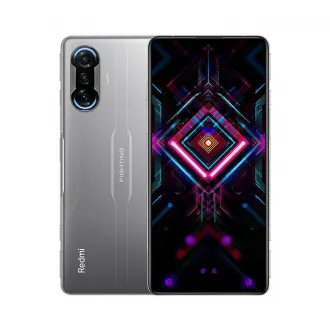The drivers to connect/unlock the Xiaomi Redmi K40 Gaming smart phone to backup,tether, network and more are below. Be aware if you are looking to unlock the bootloader or other advanced software functions it most likely will void any existing warranty. Also Functions used at the fastboot screen can wipe the phones data, be sure to have a full backup before conducting any technical procedures. Look at the specs on this page, if your device uses Mediatek chipset use MTK Drivers, if your device has a Qualcomm chipset then use Qualcomm drivers.
Display: Type: OLED, 1B colors, 120Hz, HDR10+, 500 nits (typ)
Size: 6.67 inches, 107.4 cm2 (~86.3% screen-to-body ratio)
Resolution: 1080 x 2400 pixels, 20:9 ratio (~395 ppi density)
Protection: Corning Gorilla Glass 5
Platform: OS: Android 11, MIUI 12.5
Chipset: MediaTek MT6893 Dimensity 1200 5G (6 nm)
CPU: Octa-core (1x3.0 GHz Cortex-A78 & 3x2.6 GHz Cortex-A78 & 4x2.0 GHz Cortex-A55)
GPU: Mali-G77 MC9
Step 1 — Download and extract the Android USB Driver to your PC.
Step 2 — Click Start (Windows) -> Control Panel -> Device Manager (Select Device Manager).
Step 3 — On the Device Manager window find and click on computer name to select Add legacy hardware.
Step 4 — Select Next
Step 5 — Selext Install the hardware that I manually select from a list (Advanced), and click the Next
Step 6 — Select Show All Devices afterward click Next button again.
Step 7 — Click the Have Disk button.
Step 8 — Click Browse button to find the extracted Android ADB Driver -> android_winusb.inf and click on Open.
Step 9 — Click OK.
Step 10 — Now select the Android ADB Interface -> click Next button.
Step 11 — Click Next button again.
Step 12 — Windows Security box will appear, to confirm whether you really want to install the Android USB Driver, so just choose the Install this driver software anyway.
Step 13 — Once you clicked the Finish button, then repeat from step 2 to choose Android Composite ADB Interface.
Step 14 - Done.
Show: Full Specs/Additional configurations
Network: Technology:
GSM / CDMA / HSPA / CDMA2000 / LTE / 5G
Launch: Announced: 2021, April 27
Status: Available. Released 2021, April 30
Body: Dimensions: 161.9 x 76.9 x 8.3 mm (6.37 x 3.03 x 0.33 in)
Weight: 205 g (7.23 oz)
Build: Glass front (Gorilla Glass 5), glass back (Gorilla Glass 5)
SIM: Dual SIM (Nano-SIM, dual stand-by)
: Physical pop-up gaming triggers
IP53, dust and splash protection
Display: Type: OLED, 1B colors, 120Hz, HDR10+, 500 nits (typ)
Size: 6.67 inches, 107.4 cm2 (~86.3% screen-to-body ratio)
Resolution: 1080 x 2400 pixels, 20:9 ratio (~395 ppi density)
Protection: Corning Gorilla Glass 5
Platform: OS: Android 11, MIUI 12.5
Chipset: MediaTek MT6893 Dimensity 1200 5G (6 nm)
CPU: Octa-core (1x3.0 GHz Cortex-A78 & 3x2.6 GHz Cortex-A78 & 4x2.0 GHz Cortex-A55)
GPU: Mali-G77 MC9
Memory: Card slot: No
Internal: 128GB 6GB RAM, 128GB 8GB RAM, 128GB 12GB RAM, 256GB 8GB RAM, 256GB 12GB RAM
: UFS 3.1
Main Camera: Triple: 64 MP, f/1.7, 26mm (wide), 1/2.0", 0.7µm, PDAF
8 MP, f/2.2, 120˚ (ultrawide)
2 MP, f/2.4, (macro)
Features: Dual-LED flash, HDR, panorama
Video: 4K@30fps, 1080p@30/60/120fps, 720p@960fps, HDR
Selfie camera: Single: 16 MP
Features: HDR
Video: 1080p@30fps, 720p@120fps, HDR
Sound: Loudspeaker: Yes, with stereo speakers
3.5mm jack: No
: 24-bit/192kHz audio
Tuned by JBL
Comms: WLAN: Wi-Fi 802.11 a/b/g/n/ac/6, dual-band, Wi-Fi Direct, hotspot
Bluetooth: 5.2, A2DP, LE
GPS: Yes, with dual-band A-GPS, GLONASS, BDS, GALILEO, QZSS, NavIC
NFC: Yes
Infrared port: Yes
Radio: No
USB: USB Type-C 2.0, USB On-The-Go
Features: Sensors: Fingerprint (side-mounted), accelerometer, gyro, proximity, compass, barometer, color spectrum
Battery: Type: Li-Po 5065 mAh, non-removable
Charging: Fast charging 67W, 100% in 42 min (advertised)
Power Delivery 3.0
Quick Charge 3+
